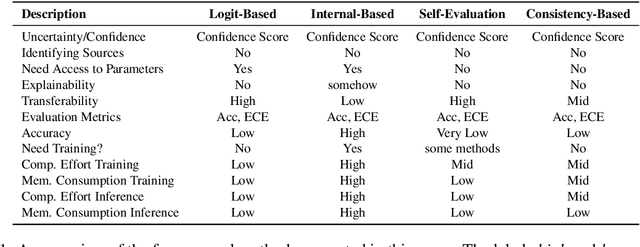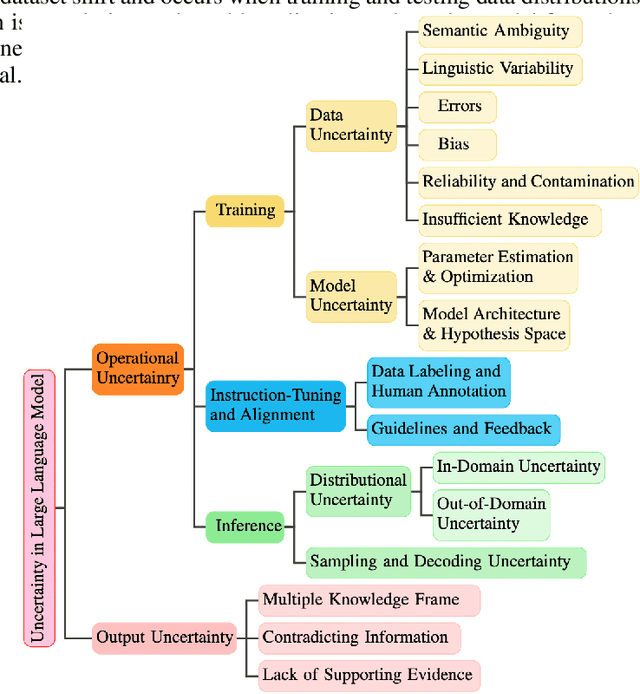Jin-Hee Cho
Virginia Tech
Sustainable Smart Farm Networks: Enhancing Resilience and Efficiency with Decision Theory-Guided Deep Reinforcement Learning
May 06, 2025Abstract:Solar sensor-based monitoring systems have become a crucial agricultural innovation, advancing farm management and animal welfare through integrating sensor technology, Internet-of-Things, and edge and cloud computing. However, the resilience of these systems to cyber-attacks and their adaptability to dynamic and constrained energy supplies remain largely unexplored. To address these challenges, we propose a sustainable smart farm network designed to maintain high-quality animal monitoring under various cyber and adversarial threats, as well as fluctuating energy conditions. Our approach utilizes deep reinforcement learning (DRL) to devise optimal policies that maximize both monitoring effectiveness and energy efficiency. To overcome DRL's inherent challenge of slow convergence, we integrate transfer learning (TL) and decision theory (DT) to accelerate the learning process. By incorporating DT-guided strategies, we optimize monitoring quality and energy sustainability, significantly reducing training time while achieving comparable performance rewards. Our experimental results prove that DT-guided DRL outperforms TL-enhanced DRL models, improving system performance and reducing training runtime by 47.5%.
OPUS-VFL: Incentivizing Optimal Privacy-Utility Tradeoffs in Vertical Federated Learning
Apr 22, 2025Abstract:Vertical Federated Learning (VFL) enables organizations with disjoint feature spaces but shared user bases to collaboratively train models without sharing raw data. However, existing VFL systems face critical limitations: they often lack effective incentive mechanisms, struggle to balance privacy-utility tradeoffs, and fail to accommodate clients with heterogeneous resource capabilities. These challenges hinder meaningful participation, degrade model performance, and limit practical deployment. To address these issues, we propose OPUS-VFL, an Optimal Privacy-Utility tradeoff Strategy for VFL. OPUS-VFL introduces a novel, privacy-aware incentive mechanism that rewards clients based on a principled combination of model contribution, privacy preservation, and resource investment. It employs a lightweight leave-one-out (LOO) strategy to quantify feature importance per client, and integrates an adaptive differential privacy mechanism that enables clients to dynamically calibrate noise levels to optimize their individual utility. Our framework is designed to be scalable, budget-balanced, and robust to inference and poisoning attacks. Extensive experiments on benchmark datasets (MNIST, CIFAR-10, and CIFAR-100) demonstrate that OPUS-VFL significantly outperforms state-of-the-art VFL baselines in both efficiency and robustness. It reduces label inference attack success rates by up to 20%, increases feature inference reconstruction error (MSE) by over 30%, and achieves up to 25% higher incentives for clients that contribute meaningfully while respecting privacy and cost constraints. These results highlight the practicality and innovation of OPUS-VFL as a secure, fair, and performance-driven solution for real-world VFL.
LLM Can be a Dangerous Persuader: Empirical Study of Persuasion Safety in Large Language Models
Apr 14, 2025Abstract:Recent advancements in Large Language Models (LLMs) have enabled them to approach human-level persuasion capabilities. However, such potential also raises concerns about the safety risks of LLM-driven persuasion, particularly their potential for unethical influence through manipulation, deception, exploitation of vulnerabilities, and many other harmful tactics. In this work, we present a systematic investigation of LLM persuasion safety through two critical aspects: (1) whether LLMs appropriately reject unethical persuasion tasks and avoid unethical strategies during execution, including cases where the initial persuasion goal appears ethically neutral, and (2) how influencing factors like personality traits and external pressures affect their behavior. To this end, we introduce PersuSafety, the first comprehensive framework for the assessment of persuasion safety which consists of three stages, i.e., persuasion scene creation, persuasive conversation simulation, and persuasion safety assessment. PersuSafety covers 6 diverse unethical persuasion topics and 15 common unethical strategies. Through extensive experiments across 8 widely used LLMs, we observe significant safety concerns in most LLMs, including failing to identify harmful persuasion tasks and leveraging various unethical persuasion strategies. Our study calls for more attention to improve safety alignment in progressive and goal-driven conversations such as persuasion.
Empirical Analysis of Privacy-Fairness-Accuracy Trade-offs in Federated Learning: A Step Towards Responsible AI
Mar 20, 2025Abstract:Federated Learning (FL) enables collaborative machine learning while preserving data privacy but struggles to balance privacy preservation (PP) and fairness. Techniques like Differential Privacy (DP), Homomorphic Encryption (HE), and Secure Multi-Party Computation (SMC) protect sensitive data but introduce trade-offs. DP enhances privacy but can disproportionately impact underrepresented groups, while HE and SMC mitigate fairness concerns at the cost of computational overhead. This work explores the privacy-fairness trade-offs in FL under IID (Independent and Identically Distributed) and non-IID data distributions, benchmarking q-FedAvg, q-MAML, and Ditto on diverse datasets. Our findings highlight context-dependent trade-offs and offer guidelines for designing FL systems that uphold responsible AI principles, ensuring fairness, privacy, and equitable real-world applications.
RESFL: An Uncertainty-Aware Framework for Responsible Federated Learning by Balancing Privacy, Fairness and Utility in Autonomous Vehicles
Mar 20, 2025Abstract:Autonomous vehicles (AVs) increasingly rely on Federated Learning (FL) to enhance perception models while preserving privacy. However, existing FL frameworks struggle to balance privacy, fairness, and robustness, leading to performance disparities across demographic groups. Privacy-preserving techniques like differential privacy mitigate data leakage risks but worsen fairness by restricting access to sensitive attributes needed for bias correction. This work explores the trade-off between privacy and fairness in FL-based object detection for AVs and introduces RESFL, an integrated solution optimizing both. RESFL incorporates adversarial privacy disentanglement and uncertainty-guided fairness-aware aggregation. The adversarial component uses a gradient reversal layer to remove sensitive attributes, reducing privacy risks while maintaining fairness. The uncertainty-aware aggregation employs an evidential neural network to weight client updates adaptively, prioritizing contributions with lower fairness disparities and higher confidence. This ensures robust and equitable FL model updates. We evaluate RESFL on the FACET dataset and CARLA simulator, assessing accuracy, fairness, privacy resilience, and robustness under varying conditions. RESFL improves detection accuracy, reduces fairness disparities, and lowers privacy attack success rates while demonstrating superior robustness to adversarial conditions compared to other approaches.
Advancing Human-Machine Teaming: Concepts, Challenges, and Applications
Mar 16, 2025Abstract:Human-Machine Teaming (HMT) is revolutionizing collaboration across domains such as defense, healthcare, and autonomous systems by integrating AI-driven decision-making, trust calibration, and adaptive teaming. This survey presents a comprehensive taxonomy of HMT, analyzing theoretical models, including reinforcement learning, instance-based learning, and interdependence theory, alongside interdisciplinary methodologies. Unlike prior reviews, we examine team cognition, ethical AI, multi-modal interactions, and real-world evaluation frameworks. Key challenges include explainability, role allocation, and scalable benchmarking. We propose future research in cross-domain adaptation, trust-aware AI, and standardized testbeds. By bridging computational and social sciences, this work lays a foundation for resilient, ethical, and scalable HMT systems.
Exposing LLM Vulnerabilities: Adversarial Scam Detection and Performance
Dec 01, 2024



Abstract:Can we trust Large Language Models (LLMs) to accurately predict scam? This paper investigates the vulnerabilities of LLMs when facing adversarial scam messages for the task of scam detection. We addressed this issue by creating a comprehensive dataset with fine-grained labels of scam messages, including both original and adversarial scam messages. The dataset extended traditional binary classes for the scam detection task into more nuanced scam types. Our analysis showed how adversarial examples took advantage of vulnerabilities of a LLM, leading to high misclassification rate. We evaluated the performance of LLMs on these adversarial scam messages and proposed strategies to improve their robustness.
Rethinking the Uncertainty: A Critical Review and Analysis in the Era of Large Language Models
Oct 26, 2024


Abstract:In recent years, Large Language Models (LLMs) have become fundamental to a broad spectrum of artificial intelligence applications. As the use of LLMs expands, precisely estimating the uncertainty in their predictions has become crucial. Current methods often struggle to accurately identify, measure, and address the true uncertainty, with many focusing primarily on estimating model confidence. This discrepancy is largely due to an incomplete understanding of where, when, and how uncertainties are injected into models. This paper introduces a comprehensive framework specifically designed to identify and understand the types and sources of uncertainty, aligned with the unique characteristics of LLMs. Our framework enhances the understanding of the diverse landscape of uncertainties by systematically categorizing and defining each type, establishing a solid foundation for developing targeted methods that can precisely quantify these uncertainties. We also provide a detailed introduction to key related concepts and examine the limitations of current methods in mission-critical and safety-sensitive applications. The paper concludes with a perspective on future directions aimed at enhancing the reliability and practical adoption of these methods in real-world scenarios.
Hyper Evidential Deep Learning to Quantify Composite Classification Uncertainty
Apr 17, 2024Abstract:Deep neural networks (DNNs) have been shown to perform well on exclusive, multi-class classification tasks. However, when different classes have similar visual features, it becomes challenging for human annotators to differentiate them. This scenario necessitates the use of composite class labels. In this paper, we propose a novel framework called Hyper-Evidential Neural Network (HENN) that explicitly models predictive uncertainty due to composite class labels in training data in the context of the belief theory called Subjective Logic (SL). By placing a grouped Dirichlet distribution on the class probabilities, we treat predictions of a neural network as parameters of hyper-subjective opinions and learn the network that collects both single and composite evidence leading to these hyper-opinions by a deterministic DNN from data. We introduce a new uncertainty type called vagueness originally designed for hyper-opinions in SL to quantify composite classification uncertainty for DNNs. Our results demonstrate that HENN outperforms its state-of-the-art counterparts based on four image datasets. The code and datasets are available at: https://github.com/Hugo101/HyperEvidentialNN.
SusFL: Energy-Aware Federated Learning-based Monitoring for Sustainable Smart Farms
Feb 15, 2024



Abstract:We propose a novel energy-aware federated learning (FL)-based system, namely SusFL, for sustainable smart farming to address the challenge of inconsistent health monitoring due to fluctuating energy levels of solar sensors. This system equips animals, such as cattle, with solar sensors with computational capabilities, including Raspberry Pis, to train a local deep-learning model on health data. These sensors periodically update Long Range (LoRa) gateways, forming a wireless sensor network (WSN) to detect diseases like mastitis. Our proposed SusFL system incorporates mechanism design, a game theory concept, for intelligent client selection to optimize monitoring quality while minimizing energy use. This strategy ensures the system's sustainability and resilience against adversarial attacks, including data poisoning and privacy threats, that could disrupt FL operations. Through extensive comparative analysis using real-time datasets, we demonstrate that our FL-based monitoring system significantly outperforms existing methods in prediction accuracy, operational efficiency, system reliability (i.e., mean time between failures or MTBF), and social welfare maximization by the mechanism designer. Our findings validate the superiority of our system for effective and sustainable animal health monitoring in smart farms. The experimental results show that SusFL significantly improves system performance, including a $10\%$ reduction in energy consumption, a $15\%$ increase in social welfare, and a $34\%$ rise in Mean Time Between Failures (MTBF), alongside a marginal increase in the global model's prediction accuracy.
 Add to Chrome
Add to Chrome Add to Firefox
Add to Firefox Add to Edge
Add to Edge